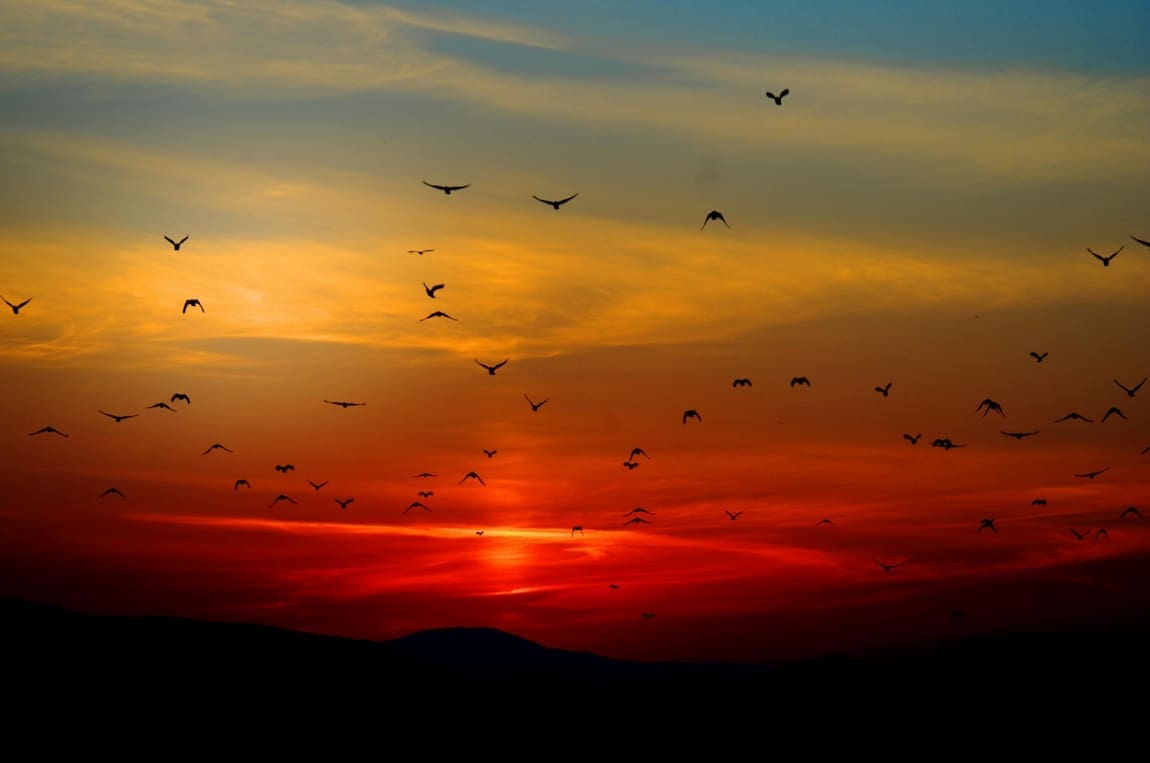By Lauren Quinn, University of Illinois Urbana-Champaign
Following decades of decline, even fewer birds will darken North American skies by the end of the century, according to a new analysis by scientists at the University of Illinois Urbana-Champaign. Their study is the first to examine the long-term effects of climate change on the abundance and diversity of bird groups across the continent as a whole while accounting for additional factors that put birds at risk, such as pesticides, pollution, land use change, and habitat loss.
“Many studies try to attribute causes like climate or land use change to bird population decline based on field-level observation. However, there has been no large-scale statistical analysis that puts together historical data on biodiversity and climate for North America,” said study co-author Luoye Chen, an assistant professor at the Hong Kong University of Science and Technology (Guangzhou). Chen completed the research during his doctoral program in the Department of Agricultural and Consumer Economics (ACE), part of the College of Agricultural, Consumer and Environmental Sciences (ACES) at Illinois.
The study relies on data from the North American Breeding Bird Survey, which gathers detailed field observations of more than 400 bird species across the continent each spring. Analyzing bird population trends between 1980 and 2015 together with climate data from the same timeframe, the researchers show a modest but significant dip in the number and diversity of birds overall and a larger drop for specialist and migratory groups. The analysis also projects scenarios for the years 2095 to 2099, with still greater declines.
“Even after controlling for a lot of other things, we see that climate change has a significant negative impact on birds,” said study co-author Madhu Khanna, professor in the Department of ACE and director of the Institute for Sustainability, Energy, and Environment at Illinois. “This is just one more reason we need to make serious efforts to mitigate climate change as soon as possible.”
Chen says common birds like sparrows that occupy a wide variety of habitats throughout North America are less affected by climate change. According to the analysis, these generalist species declined about 2.5% during the 1980-2015 period, with projected declines between 1 and 3% by century’s end.
Specialist species like the threatened spotted owl and the endangered red-cockaded woodpecker have more specific habitat and diet requirements, putting them at greater risk in a changing environment. Chen says climate was responsible for about 5% of their decline between 1980 and 2015, with losses up to 16% projected by 2099.
The subset of specialist species that are also migratory, like the whooping crane, mirror trends for specialists as a whole. The researchers say although migrants might have the ability to move to more favorable locales, birds don’t have the advantage of weather apps to check conditions in their destination before taking off.
“These birds have generations-long patterns of migration. They’re going to migrate no matter what, and they don’t know what’s waiting at the other end. It may be too hot or dry for them,” Khanna said. “But climate doesn’t just affect birds’ health directly in terms of temperature. It could cause changes in their food supply along their migration route.”
The researchers also tested the hypothesis that birds could adapt to a warming climate by separately analyzing smaller chunks of time. If birds declined at a greater rate early in the warming period and slowed down later, that would indicate adaptation to higher temperatures over time.
“Previous small-scale field studies showed potential adaptive behaviors in birds responding to climate change,” Chen said. “Unfortunately, we didn’t find evidence to support adaptation over time. In the long term, we still found significant reductions.”
Although losses in the 2 to 16% range may not sound as alarming as some predictions, the researchers emphasize that their analysis represents the average loss across an entire continent. Some bird species and groups may be much more significantly affected, especially in specific regions. Also, any further reduction in bird abundance or diversity may be too much, as they play important roles in the ecosystem, from pollination to insect control and beyond.
“Many of the specialist birds really are quite special. Some are endangered species, and others are endemic to very small areas,” Chen said. “We can’t afford to lose any of them, given their crucial roles in ecosystems.”
More information: Luoye Chen, Madhu Khanna, ‘Heterogeneous and long-term effects of a changing climate on bird biodiversity’, Global Environmental Change Advances (2024; 2: 100008); DOI: 10.1016/j.gecadv.2024.100008. University of Illinois Urbana-Champaign – Press Release. Featured image credit: Pixabay | Pexels




